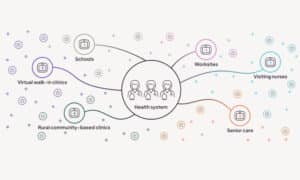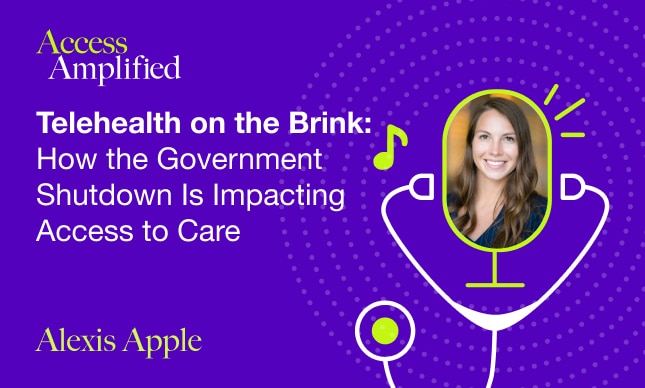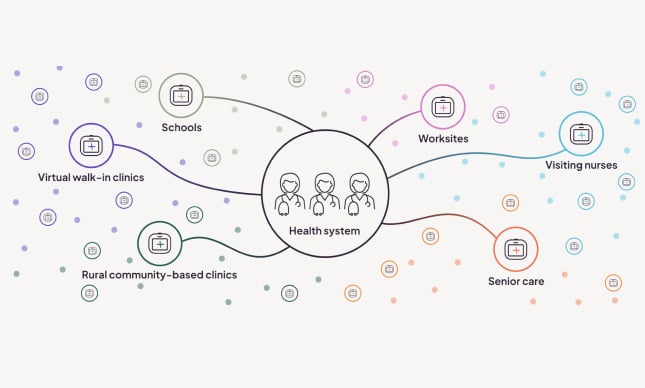Tackling staff shortages in rural areas with virtual care

Rural America is disproportionally underserved when it comes to healthcare due to staff shortages and a lack of access to quality services. This blog post explores how virtual care can be leveraged as a solution to combat these staff shortages, providing improved convenience and cost-effectiveness for those living in rural areas.
Overview of rural America’s staff shortages
Between 2010 and 2021, at least 136 rural hospitals and health systems closed their doors.
The staff shortages faced by rural hospitals and health systems are often due to pay, housing, and lack of resources. Rural health systems often rely on contract labor for staff, which is more costly and can frustrate regular staff, who get paid less. With housing an issue across the country, the problem is exacerbated in rural areas where there are fewer developments and therefore less and more expensive housing. Staff need to commute further, often with poor public transport systems, or struggle to find affordable housing at all. And with over 40% of rural hospitals operating with negative profit margins, resources are scarce and staff have to make do with what they have – which is often not enough for them to successfully treat their patients.
Less access leads to sicker populations
This staff shortage has significant consequences on the health outcomes of rural Americans, who are among the most vulnerable populations in the nation. With limited options for seeking medical assistance, people living in rural areas often struggle to receive basic healthcare services.
For example, in 2020, 47% of rural community hospitals did not provide obstetric services, with 89 obstetric units closing between 2015 and 2019. Seven million women reside in counties with limited or no access to maternity care, impacting half a million newborns annually.
How virtual care can help
High-quality virtual care can help solve some of the challenges being faced by rural America. While there are some underlying issues that need to be addressed, such as more staffing overall and housing prices, virtual care can certainly help to ease the pain being faced by health systems and their staff in rural areas. Let’s take a look at how.
Reduce the emergency room or urgent care clinic load
With quality virtual care that includes remote physical exams, long wait times can be reduced and overloaded ERs can be supported. TytoCare’s Pro Smart Clinic is being used in ERs and urgent care centers by several of our partners to enable remote staff to see patients at peak times. While not all emergency cases can be diagnosed and treated remotely, there are patients who end up in the ER whose symptoms can be investigated and diagnosed remotely, freeing up on-site staff to deal with other patients.
Access to specialists from remote clinics
Lack of access to specialty care is another challenge facing rural areas. With specialists primarily based in urban areas, many rural residents will have to travel for hours to access specialty care, even if it’s just for a check-up. Using remote physical exams, specialists can examine their patients from afar, saving them time and money on travel, minimizing absenteeism at work, and improving compliance – which usually results in healthier, more engaged patients.
Care from home
By taking remote physical exams one step further and bringing them directly into the home, many of our partners are able to provide their rural patients access to a PCP no matter where they’re based. With TytoCare’s Home Smart Clinic, clinicians can examine patients’ ears and throats, listen to heart and lung sounds, and check temperature and skin completely remotely, giving their patients better access to care, and reducing travel time and frustration.
Overall, virtual care offers many advantages to those living in rural America who often lack access to quality healthcare due to geographical constraints. It allows organizations to expand their service offerings while providing cost-effective treatments that improve overall patient experience and satisfaction across all levels.





